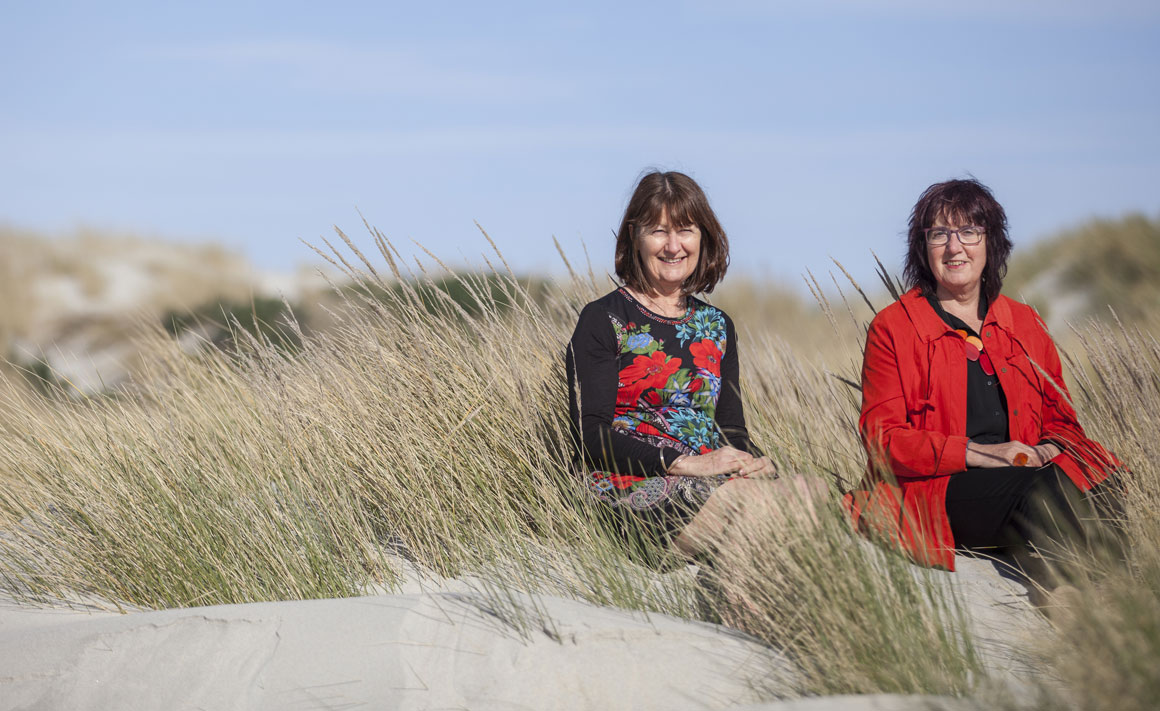
New Zealand can learn a lot from Pacific Island countries when it comes to adaptation to climate change, according to Associate Professor Jenny Bryant-Tokalau and Dr Lyn Carter (Te Tumu School of Māori, Pacific and Indigenous Studies) who are co-writing a book on the subject.
The book arose from Carter's research on historical environmental causes of migration through the Pacific, which led to an examination of what is happening now in terms of environmentally induced migration, including the impacts of climate change.
“We are looking at the issue from an indigenous perspective,” Carter explains.
“Peoples across the Pacific over a number of generations have found their own ways, within their own world views, of how to adapt to environmental change – and climate change is no different.”
Bryant-Tokalau points to historical examples of Pacific peoples building platforms over the water to create more living space. She contrasts this traditional adaptation with proposals by Japanese companies to construct floating islands in the Pacific in response to rising sea levels.
“They are a technological fix and it is likely that they would not work,” says Bryant-Tokalau. “And I feel that they are not looking at what people did traditionally, because people in the Pacific are perfectly capable of adapting to environmental changes themselves.”
Bryant-Tokalau says that the Pacific has been a leader in the international climate change debate and response.
“Since the late '70s and early '80s, Pacific Island governments and peoples have been really involved in the global discussion on climate change and there are many examples of things that people are doing.
“There is some really interesting work taking place on village adaptation, where non-government organisations and university-trained scientists have gone out to villages in different parts of the Pacific and ensured that people know how to measure water quality and coral bleaching, what's happening to shell fish on the reefs, and all those sorts of things.
“So, there is this low-tech training, but also discussion and participation of people in managing their own issues. There would be virtually nobody who was unaware of issues of climate change in the Pacific today.
“The focus of the book is the lessons that New Zealand can learn from this huge wealth of historic and contemporary knowledge, practice and adaptation in the Pacific,” Bryant-Tokalau says.
“New Zealand has to get over itself as being a big industrialised nation with a paternalistic approach to the Pacific,” Carter adds. “There are a lot of things that other Pacific Island states can teach it.”
Bryant-Tokalau cautions that there are some lessons to be learned, too, in what not to do. She gives the example of the Kiribati government buying land in Fiji for possible future relocation of people as rising sea levels threaten Kiribati. “It is land high in the mountains and is probably not the best adaptation response for an atoll-dwelling people who are fisher folk.”
Carter says that Māori traditionally have also responded to environmental changes in their own ways. She cites cases of the abandonment of cultivation areas that were susceptible to flooding.
She says that the indigenous response in New Zealand to climate change, however, has been much less pronounced than in the Pacific. She offers examples of sand-dune restoration projects, and iwi commissioning reports from NIWA on different scenarios for the effects of climate change on their regions, with a view to devising adaptation policies.
Bryant-Tokalau and Carter have previously contributed individually to book chapters and journal articles on the social impacts of environmental changes.
FUNDING
Dr Lyn Carter:
- University of Otago Humanities Research Grant